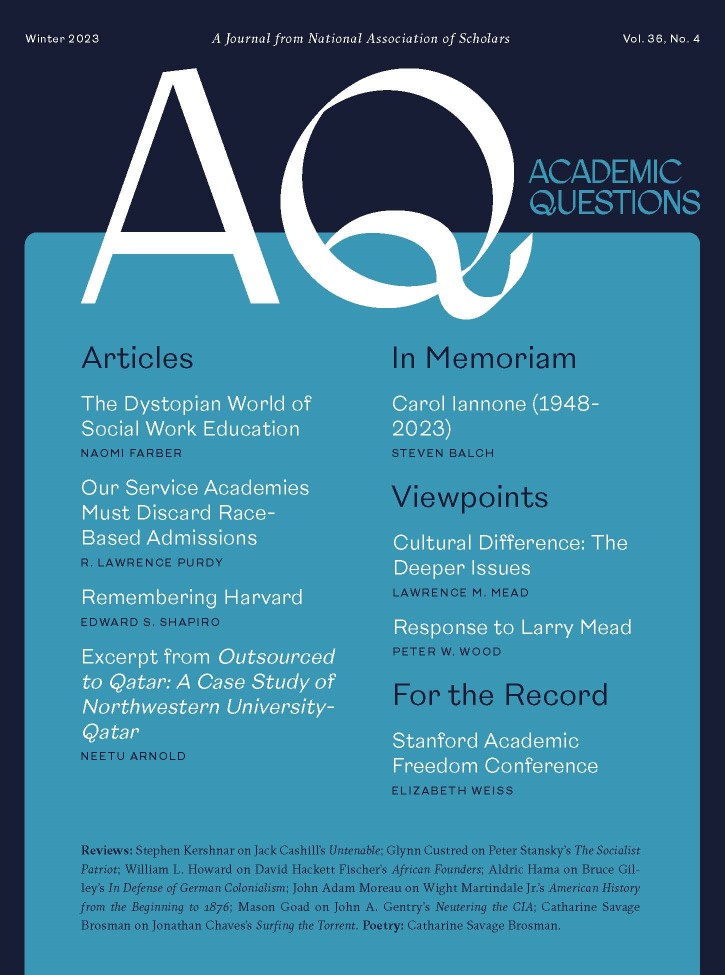American History from the Beginning to 1876. A Home School Guide, Wight Martindale Jr., Amazon, 2023, pp. 204, $19.95 softcover.
Wight Martindale Jr. has written a book that is smoothly readable and engrossing for the pupil and teacher, a book that also merits a place on the shelves of both historians and the general reader. The pupil and teacher benefit from the book’s heavy emphasis in its thirty-seven chapters on people, and any reader can benefit from cogent summaries of crucial subjects such as the Federalist Papers and the Bill of Rights.
The textbook is particularly useful for homeschooling because it successfully carries off an array of introductions, discussion questions, and quizzes tied to 122 subjects.
The adult reader will be glad for the treatment of matters on which he is rusty or only dimly aware of, such as the constant peril faced by American Indians and the honeycomb of Reconstruction. It is also a pleasure in a book on American history to encounter the Italian city-state, Cromwell, the Thirty Years War, and the French Revolution. What Martindale said in an interview makes sense: “I give an inordinate amount of attention to what was going on in Europe because those events were what drove settlers to America.”
Martindale rejects looking at an historical event and drawing it immediately into the present, such as what followed on FDR’s New Deal. In his approach, one would begin with Hoover’s presidency. “I look back at the historical situation, the predicament of the moment,” he went on, “and what came before the event and try to understand why people acted as they did. The present doesn’t matter.”
The touchstone of Martindale’s American History is Paul Johnson’s History of the American People. Martindale considers it a brilliant work but too long for the middle school or high school class. It is from Johnson that Martindale pulls the most reading assignments. It is also from Johnson that the theme of Martindale’s book is derived, and it is the theme for the pupil to address. Here is the essence of Johnson as presented by Martindale.
- The creation of the United States of America is the greatest of all human adventures. Can a nation arise above the injustices of its origins and by its moral purpose and performance atone for them?
- Grievous wrongs must be balanced by the erection of a society dedicated to justice and fairness. Has the United States done this?
- The Americans designed a republic of the people to be a model for the entire planet. Have they made good their audacious claims?
The author’s reason for writing this textbook bears heavily on its contents. Finding no good high school American history survey, Martindale discovered that most consist of tales written by committees that leave students bored and indifferent. In Johnson one finds genius and people who are more interesting than theories or random events, and he is rigorous, providing thousands of end notes to support opinions and assertions. Martindale’s is a chronological survey which does not cherry-pick issues and topics that fit present day political issues. It is about the tough choices the people of the past had to make. Such an approach is almost unique.
Further, Martindale explained, the book is intended to be a tool tying pupil and teacher in a bond of affection and interest. The teacher who understands the material and guides the student will care as much about what is taught as the student does. History teaches how people actually behave and in learning this one is taken toward humility and gratitude for those who preceded us bravely and wisely.
The book has three parts: Discovery and Revolution, Forming the United States, and Civil War and Reconstruction. The vast majority of the writing is Martindale's. Verbatim excerpts (e.g. the Puritan governor John Winthrop, Alexis de Tocqueville, Federalist Paper #10) are judicious and support the narrative.
The format is similar throughout. An example: Week Seven Day Three. Assigned to be read at home are pages of Johnson and another writer on Maryland, and Johnson on Pennsylvania. The title of the text is, “The Catholics Come to Maryland, 1633.” There is a map from the Library of Congress. The discussion question is: How did Maryland benefit from a small but particularly wise group of families settling there? How did that happen? Here is how Martindale begins the story and this writing is typical of his prose:
George Calvert (1597-1632), the man who founded Maryland, was a Catholic convert. He made his money in Ireland and as an investor in the East India Company and the Virginia Company. The Catholic-leaning Charles I gave him a charter to establish a settlement for Catholics in the northern Chesapeake area, where he immediately sent over his son Cecil to organize the settlement.
The original ship full of settlers had many Protestants aboard, and Calvert's instructions to his managers were to “preserve unity and peace between Protestants and Catholics.” The Protestants, who always outnumbered Catholics, were to receive “mildness and favor” and the Catholics to practice the faith as quietly as possible. They said a dedicatory Mass on shore when they arrived.
The Maryland lesson comes between one titled "The Scots-Irish" and one titled "Pennsylvania." So, unlike a customary textbook wherein one gets “This Happened” and then “This Happened,” the Martindale way is different. He follows chronology but he puts epochs and events where he feels the reader will be pleased. In this regard, savvy readers are likely to twin esteem for Martindale's book with esteem for another widely distinctive way of writing history, Wilfred McClay's Land of Hope. An Invitation to the Great American Story. McClay is admired for mining the remarkable. For example, McClay is vivid on Charles Grandison Finney, a nineteenth century revivalist, and the World War II ship builder, Henry J. Kaiser. Martindale also mines the remarkable. He is vivid on Anne Hutchinson, who was tried in 1637 for preaching, and Stephen A. Douglas, the Lincoln debater.
In Martindale's hands the chapters flow easily, none too long, none leaving you vexed due to brevity. This rewarding treatment is because, as journalists like to say, “See a good yarn and tell it brightly.” Martindale has been around the block plenty. He was an accomplished reporter (for Business Week and elsewhere), a grand success on Wall Street, a Ph.D. in English from NYU, a secondary and university teacher and professor, and the published writer of fine things.
Although United States history is a darn good yarn, Martindale’s writing is not dumbed down to keep the reader in a lasso. He covers complex matters such as the U.S. Bank, the ebbs and flows of money and the economy, the short end of the stick held by the South on almost all accounts, the devilish intricacies of the War of 1812 and the class structure of New England. As to calling the book a good yarn, the author’s many opinions, anecdotes, and facts sparkle. Here are a few of them:
- In New Spain a civil society and a middle class never developed; at the top were a “small group of rascals”; below, impoverished masses.
- The Southern gentlemen who followed the original settlers constituted a principal element in the American tradition—useful, moderate, creative, “good for all seasons.”
- Perhaps money is mankind’s greatest invention. A peaceful way to store power. A creator of wealth. A democratic tool—anyone can get it and keep it.
- Who is in Emanuel Leutze’s painting of Washington crossing the Delaware and what are the exaggerations in the work?
- The great Alexander Hamilton was also a great jackass whose “stunning stupidity” and marital infidelity resulted in a “horrifying tragedy.”
- Vast swaths of corruption are found in many presidential administrations.
- Only the stony hearted would not be moved by how Mark Twain helped the ill and dying U.S. Grant complete his memoirs.
- When severe accusations were made of bogus material in Uncle Tom’s Cabin Stowe and her brother published a 259-page rebuttal of the attacks on the book.
- Sherman said of Grant: “He stood by me when I was crazy, and I stood by him when he was drunk.”
- The Cherokees, who were forced west in 1836-38, were a solid and settled society with farming, business, cattle, schools, and courts.
All that and much more is in a standard size textbook with a handsome cover, fine illustrations, tables, maps, and a layout with room to make notes.
At the year 1876 Martindale comes with a chapter title "Reconstruction and Second Founding." And one does not arrive at 1876 without a journey through slavery, which in Martindale's sure handed relating is stark and brisk in its summaries and captivating in its details. Slavery is covered in several places in the book. Slavery as written by Martindale is an implicit snubbing of the foolishness of the 1619 project.
In "Slavery in the Eighteenth Century," Martindale says that abuse of slaves brought continual plots and uprisings, all of them before the development of American cotton. In "Slavery Grew Dramatically in the Eighteenth Century," he writes that "the three-fifths voting compromise gave [the South] a huge incentive to import more slaves. . . . It might seem so, except that from 1804 to 1807—the four years just before importation of slaves was to be prohibited—over sixty-four thousand were imported, more than the total in any previous decade." In "Slavery and the Founders," Martindale quotes with approval a book of that title by Paul Finkelman. Finkelman writes that the Constitution was not proslavery.
In "The Changing Face of Slavery," Martindale writes that as early as 1816 with the election of James Monroe, "many white leaders in the South had ceased apologizing for slavery and began to claim that slavery was a positive blessing for blacks and white alike." In "Black Society in the South," the author says: "By 1820 about 80 percent of all slaves that moved from the old South (Virginia, Maryland, the Carolinas) to the new South (Alabama, Louisiana, Mississippi, and Texas) migrated with their owners."
twenty-first century reader knows the Civil War is coming and in this century he looks back with chagrin on how the nation after the war was overpowered by the wreckage of slavery. One could no more arrest such wreckage than a Greek could change the denouement of a play. The North called it Reconstruction, the South called it Redemption. Whatever the name, Martindale shows the period for what it was, a fiasco.
“America,” Martindale writes, “needed at least four but probably eight more years of Lincoln. . . . No reconstruction would succeed, which left the Confederacy an impoverished shell with no control of their lives.”
One hopes for a sequel to this guide covering the second half of the American story. But for now, a sincere hat tip to Martindale, who has facilitated the transmission of America’s past to the young.
John Adam Moreau, a history Ph.D. from the University of Virginia, has been a longtime reporter and editor for major daily newspapers; [email protected]. He is the author of Randolph Bourne, Legend and Reality (Public Affairs, 1966) and of published essays on such subjects as Huey Long, Francisco de Miranda, and Heywood Broun. He appeared in AQ in fall 2023 with “Measuring the Good Against the Bad,” a review of John H. Garvey’s The Virtues.
Photo by Mirsad on Adobe Stock














